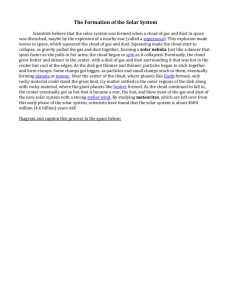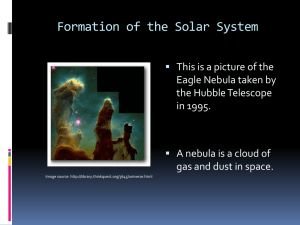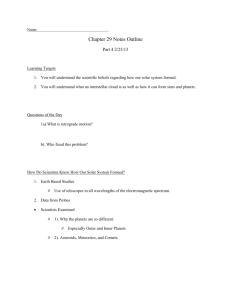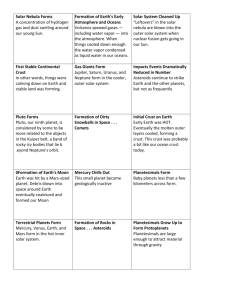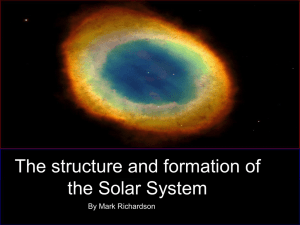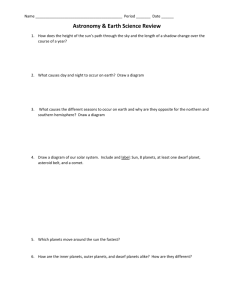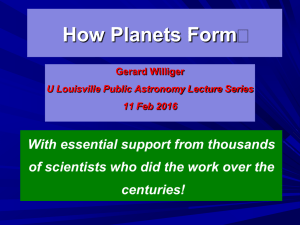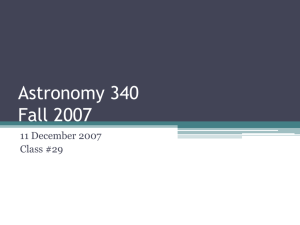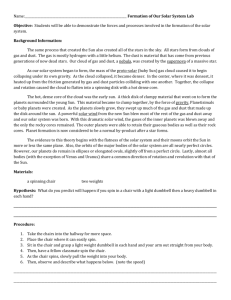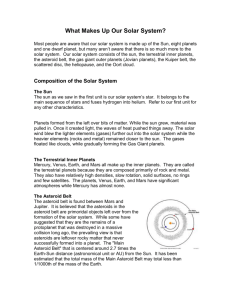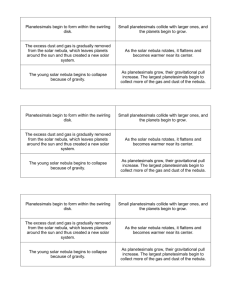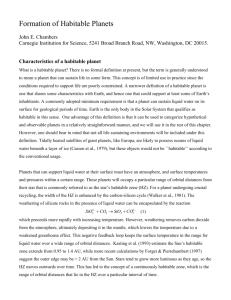28.1-notes
advertisement
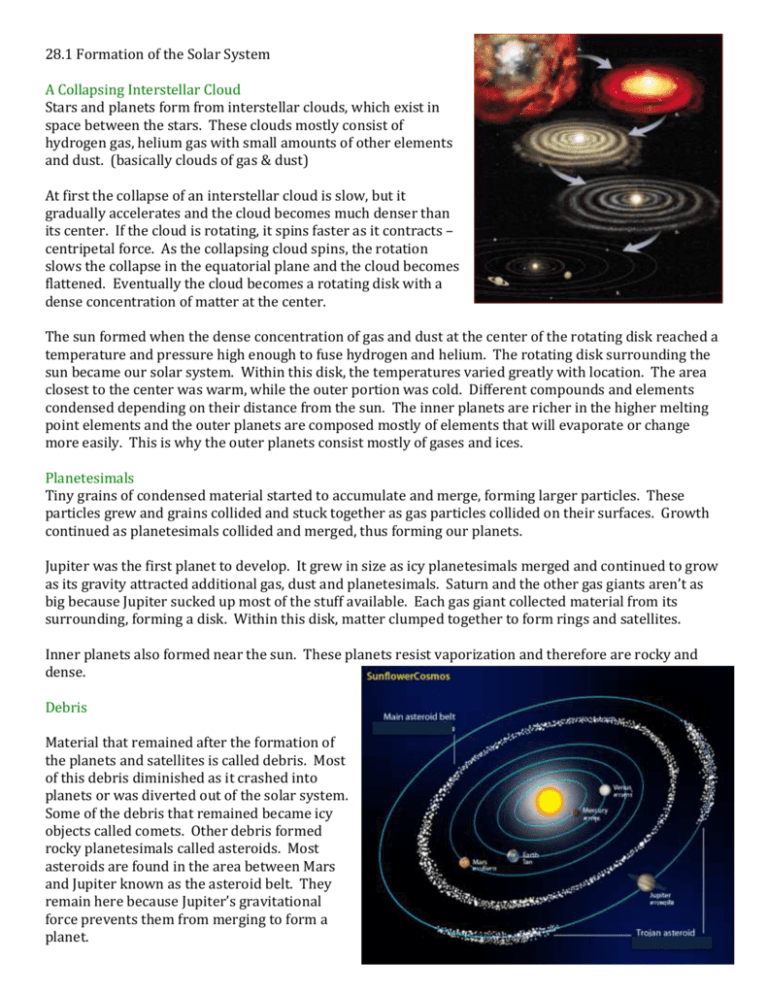
28.1 Formation of the Solar System A Collapsing Interstellar Cloud Stars and planets form from interstellar clouds, which exist in space between the stars. These clouds mostly consist of hydrogen gas, helium gas with small amounts of other elements and dust. (basically clouds of gas & dust) At first the collapse of an interstellar cloud is slow, but it gradually accelerates and the cloud becomes much denser than its center. If the cloud is rotating, it spins faster as it contracts – centripetal force. As the collapsing cloud spins, the rotation slows the collapse in the equatorial plane and the cloud becomes flattened. Eventually the cloud becomes a rotating disk with a dense concentration of matter at the center. The sun formed when the dense concentration of gas and dust at the center of the rotating disk reached a temperature and pressure high enough to fuse hydrogen and helium. The rotating disk surrounding the sun became our solar system. Within this disk, the temperatures varied greatly with location. The area closest to the center was warm, while the outer portion was cold. Different compounds and elements condensed depending on their distance from the sun. The inner planets are richer in the higher melting point elements and the outer planets are composed mostly of elements that will evaporate or change more easily. This is why the outer planets consist mostly of gases and ices. Planetesimals Tiny grains of condensed material started to accumulate and merge, forming larger particles. These particles grew and grains collided and stuck together as gas particles collided on their surfaces. Growth continued as planetesimals collided and merged, thus forming our planets. Jupiter was the first planet to develop. It grew in size as icy planetesimals merged and continued to grow as its gravity attracted additional gas, dust and planetesimals. Saturn and the other gas giants aren’t as big because Jupiter sucked up most of the stuff available. Each gas giant collected material from its surrounding, forming a disk. Within this disk, matter clumped together to form rings and satellites. Inner planets also formed near the sun. These planets resist vaporization and therefore are rocky and dense. Debris Material that remained after the formation of the planets and satellites is called debris. Most of this debris diminished as it crashed into planets or was diverted out of the solar system. Some of the debris that remained became icy objects called comets. Other debris formed rocky planetesimals called asteroids. Most asteroids are found in the area between Mars and Jupiter known as the asteroid belt. They remain here because Jupiter’s gravitational force prevents them from merging to form a planet. Early astronomers believed that all objects in the solar system revolved around the Earth in what was called a geocentric model. We know that this is not the case however. In 1543, Polish astronomer Nicolaus Copernicus suggested that the sun is the center of the solar system and all objects revolve around it in what is called a heliocentric model. In a heliocentric model, the inner planets move faster in their orbits around the sun due to the increased gravity with being closer to the sun. Each planet orbits the sun in an elliptical orbit which is more oval shaped.
